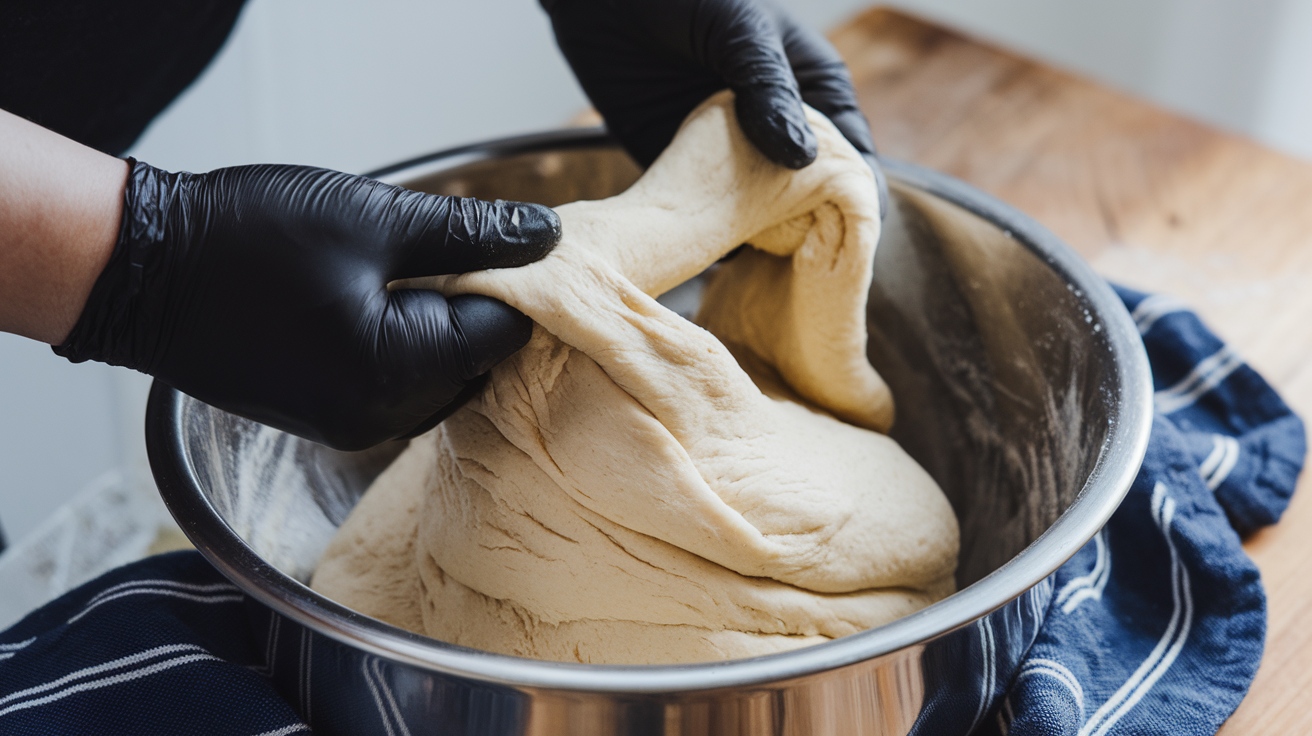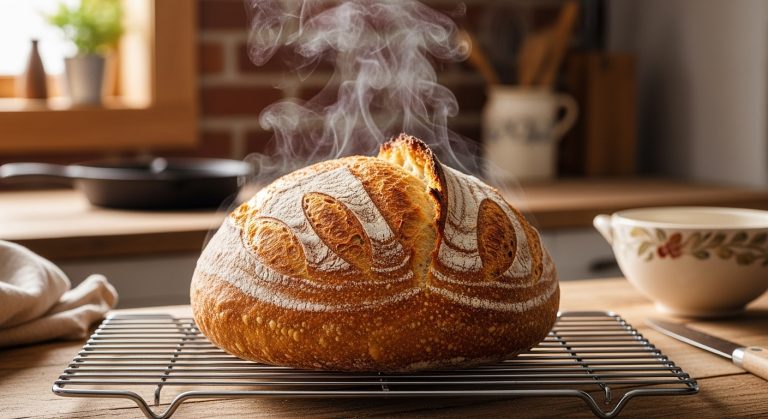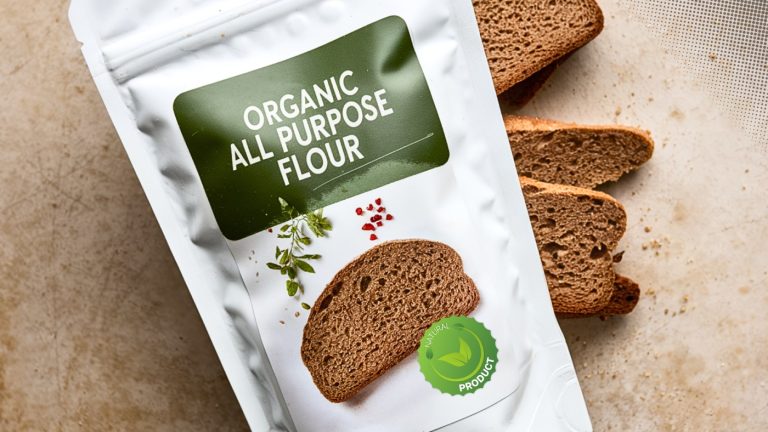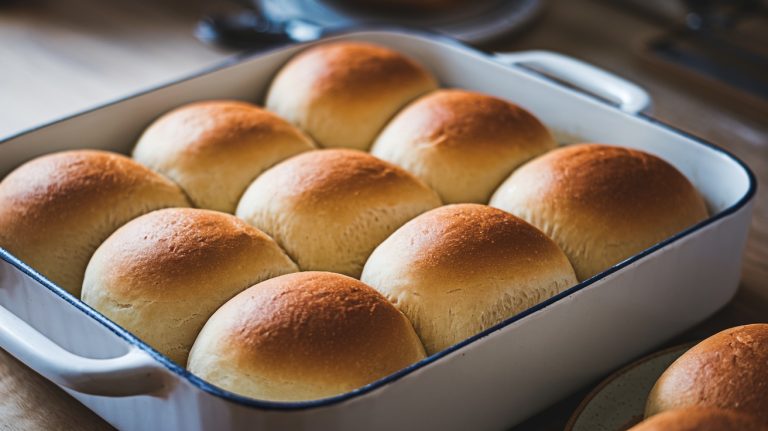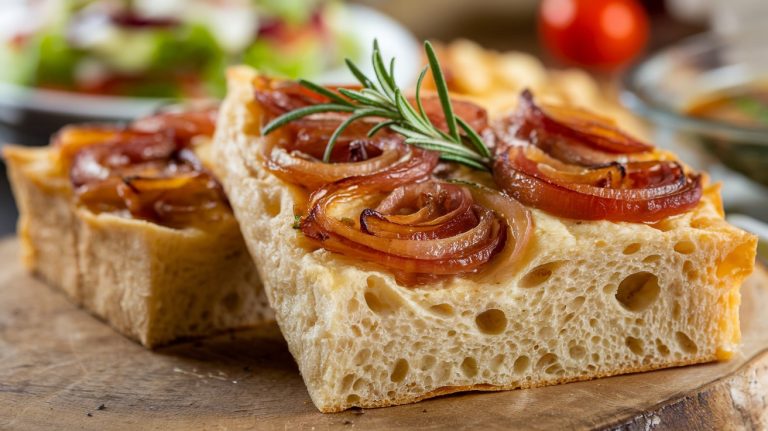Sourdough Coil Fold Vs Stretch and Fold: Choosing the Best Method
When comparing sourdough coil fold and stretch and fold techniques, each serves a distinct purpose. Use coil folds for high-hydration doughs (over 85%)—they gently develop gluten while maintaining dough integrity, perfect for artisanal baking.
This method yields a lovely open crumb structure. On the other hand, stretch and fold are versatile for all dough types, including lower hydration, and work well for larger batches.
It enhances gluten strength and promotes gas retention. Knowing which technique suits your dough can elevate your baking. Stick around to uncover more insights into these valuable methods.
Key Takeaways
- Coil folds are ideal for high-hydration doughs (85%+), promoting gentle gluten development and maintaining dough integrity.
- Stretch and fold techniques are versatile and suitable for all dough types, including those with lower hydration. They enhance strength and volume.
- Coil folding supports fermentation and yields an open crumb structure, enhancing the aesthetics and texture of the final bread.
- Stretch and folding allow for efficient dough development without extensive kneading, making it beneficial for larger batches.
- Both methods require wet hands to prevent sticking, but over-folding can damage the gluten network and affect density.
Overview of Techniques
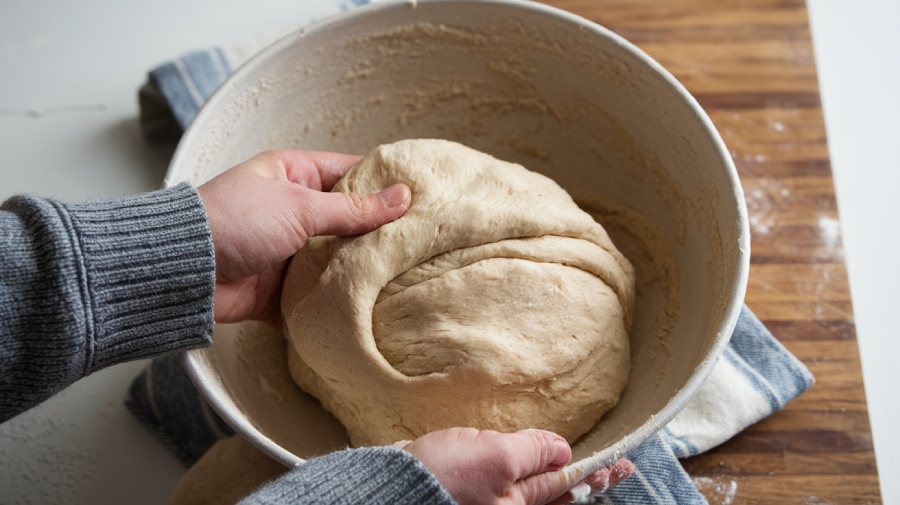
Understanding the different dough-handling techniques is essential for enhancing your bread-making skills. Two popular methods are the Coil Fold and the Stretch and Fold. Each has its unique approach and benefits, especially when working with sourdough bread.
Coil Fold is best suited for high-hydration doughs, around 85% hydration. This technique focuses on gentle handling, lifting the dough, and folding it over itself to build strength without tearing. By using Coil Folds, you encourage a more open crumb structure, which is a prized characteristic in sourdough.
On the other hand, the Stretch and Fold technique is versatile and works well with all dough types, including those with lower hydration. In this method, you pull the dough up and over in a circular motion. It enhances elasticity and tension, making it particularly efficient for larger batches. You can repeat the Stretch and Fold multiple times, building dough strength and volume as you go.
Both methods are designed to develop gluten, but each offers a different approach and result.
Step-by-Step Coil Folding
To master the coil fold technique, you’ll want to start by understanding its benefits for gluten development.
This method allows you to strengthen your high-hydration dough while maintaining its structure, making it easier to handle.
Let’s break down the steps to guarantee you get the most out of each fold.
Coil Fold Technique Overview
The coil fold technique is a fantastic method for handling high hydration doughs, especially those around 85% hydration. It’s particularly useful during bulk fermentation, allowing you to develop gluten structure without excessive handling.
This technique aligns with the principles of temperature management in fermentation to guarantee ideal yeast activity. Begin by wetting your hands to prevent sticking. Gently loosen the edges of the really high hydration dough from the bowl, then lift it from the center, allowing it to fall back onto itself.
After each lift and fold, rotate the bowl 90 degrees. This rotation is vital to maintain the dough’s integrity and guarantee even gluten development. You’ll want to complete two folds per set, which promotes a coiled structure that supports fermentation while minimizing the risk of tearing.
This technique is especially beneficial in the later stages of dough development, helping to strengthen the dough while working with wild yeast.
Benefits of Coil Folding
Coil folding offers several advantages that elevate your sourdough baking experience. This method is especially beneficial for high-hydration doughs, which can reach up to 85% hydration. By gently lifting the dough and folding it over itself, you develop gluten without excessive handling, maintaining the dough’s integrity and structure.
Using coil folds creates a coiled structure that supports fermentation, enhancing the final bread’s texture. This technique is perfect for small batches, making it ideal for artisanal baking, where each dough’s integrity is essential. You’ll also notice that coil folds yield a more open crumb structure, which contributes to your sourdough’s aesthetic and texture.
| Advantage | Description | Impact on Bread |
|---|---|---|
| High Hydration Friendly | Works well with doughs up to 85% hydration | Easier gluten development |
| Gentle Handling | Maintains dough structure during folding | Better integrity and texture |
| Supports Fermentation | Coiled structure enhances fermentation | Improved flavor and rise |
| Open Crumb Structure | Promotes a more airy texture in the final bread | Visually appealing and light |
Tips for Effective Folding
Effective folding techniques can markedly enhance your sourdough’s texture and structure. To start the coil fold, gently loosen the dough edges from the sides of the bowl. This step is vital; you want to guarantee minimal tearing of the gluten structure.
Additionally, incorporating stretch-and-fold techniques during bulk fermentation can further improve gluten development and flavor. Next, lift the dough from the middle and let it fall back into the bowl under its own weight. This gentle handling helps maintain the dough’s integrity.
After that, rotate the bowl 90 degrees and repeat the lift and fold process. Aim for a total of two coil folds per set to promote strong gluten development. Remember to keep your hands wet throughout this process; it’ll prevent sticking and make handling the high-hydration dough much easier.
Incorporate these coil folds during the final stages of gluten development. This timing is essential, as it helps distribute strength evenly and supports fermentation.
Step-by-Step Stretch and Folding
Mastering the stretch and fold technique is essential when you’re ready to enhance your sourdough’s structure. This method improves gluten development and allows for better gas retention, which is vital for a well-risen loaf.
Start by lightly wetting your hands to prevent sticking. Gently pull the dough up from the sides and fold it over onto itself. This initial move sets the stage for improved gluten development, as the windowpane test indicates the strength of your dough’s gluten network.
Now, execute folds in a circular pattern. Begin at the 12 o’clock position, then move to 3, 6, and finally 9 o’clock, ensuring you maintain the dough’s integrity. Each fold helps strengthen the gluten network, important for achieving that perfect crumb.
Repeat this stretch and fold technique four times per set. As you do, observe the dough’s strength; typically, you’ll want to perform 4 to 6 sets, adjusting based on the dough’s hydration and your desired characteristics.
Comparing the Benefits of Each
When deciding between coil folds and stretch and folds, it’s important to take into account your dough’s hydration and batch size.
Coil folds excel with high-hydration doughs, providing a gentle touch that enhances gluten development, while stretch and folds work best for larger quantities, boosting strength and volume.
Each method has its strengths, making it vital to choose the right technique for your specific baking needs.
Technique Suitability Comparison
Choosing the right folding technique can considerably impact your sourdough’s texture and structure. If you’re working with high hydration doughs, around 85% hydration, the coil fold technique might be your best bet. It gently develops gluten while maintaining the dough’s integrity, making it ideal for smaller batches.
The coiled structure created by this method promotes even gluten development and supports fermentation, resulting in a beautifully airy crumb.
On the other hand, stretch and fold offers significant advantages if you’re handling larger quantities of dough. This technique efficiently enhances strength and volume, allowing you to develop dough without extensive kneading.
You can perform multiple stretches and folds in a set, typically four, which greatly increases the dough’s elasticity and tension.
Both techniques have their unique benefits. Coil folds provide gentle handling for wet dough, while stretch and folds are excellent for a variety of dough types.
Your choice ultimately depends on your specific dough characteristics and batch size.
Dough Handling Differences
With the right approach to dough handling, you can greatly influence the outcome of your sourdough. When working with high-hydration doughs, the coil fold technique shines. It’s gentler, allowing for better gluten development without risking damage to the dough’s structure. This method promotes even gluten distribution, making it ideal for small batches where care is vital.
Additionally, using higher protein flours can further enhance gluten strength, reduce stickiness, and improve dough manageability, especially when employing techniques like coil folding that require a delicate touch.
On the other hand, if you’re tackling larger batches, the stretch and fold technique is your friend. It’s more efficient, enhancing the dough’s strength and volume through a series of pulls and folds.
While both methods require wet hands to manage that sticky dough, the coil fold focuses on lifting and folding gently, whereas the stretch and fold involves more aggressive pulling across the dough’s surface.
Your choice between these techniques can considerably impact the final crumb structure. Coil folds often yield a more open crumb, perfect for artisan-style loaves, while stretch and folds provide the strength needed for better gas retention.
Choosing the Right Method
When it comes to selecting the right folding method for your sourdough, understanding your dough’s characteristics is key.
If you’re working with high-hydration doughs (over 85%), coil folding is your best bet. This method is gentle and ideal for maintaining dough integrity during the later stages of gluten development.
On the other hand, stretch and fold techniques work well for any dough type, including lower hydration varieties.
If you’re handling smaller batches, coil folding will help you preserve the dough’s structure. Conversely, stretch and fold is more efficient for larger quantities, making it easier to manage multiple loaves.
Both methods promote gluten development, but coil folds create a more open crumb structure, perfect for achieving that artisanal bread texture.
Frequently Asked Questions
Are Coil Folds Better Than Stretch and Fold?
When considering whether coil folds are better than stretch and folds, it really depends on your dough and desired results.
Coil folds offer a gentle method for developing gluten, perfect for high hydration doughs, while stretch and folds are more versatile for various types.
You might find coil folds yield a more open crumb, but stretch and folds can enhance volume and gas retention.
Ultimately, experimenting with both techniques could lead to the best outcomes for your baking.
Can You Stretch and Fold Sourdough Too Much?
Yes, you can stretch and fold sourdough too much.
Over-folding damages the gluten network, resulting in a weaker dough that won’t rise properly. You should aim for 4 to 6 sets of folds, monitoring the dough’s elasticity and responsiveness.
If it becomes excessively sticky or loses its stretch, you’ve likely overdone it.
Pay attention to these signs to maintain the dough’s integrity and achieve a better final product.
When to Stretch and Fold Sourdough?
When’s the best time to stretch and fold your sourdough?
After your dough has rested for 30 minutes to an hour, that’s when you should engage. This is during the bulk fermentation phase, allowing initial gluten formation.
Aim for every 30 minutes to an hour, performing 4 to 6 sets.
Remember to lightly wet your hands to manage stickiness and enhance elasticity by pulling the dough in a circular pattern.
What Is a Coil Fold in Sourdough Bread?
A coil fold in sourdough bread is a gentle technique that helps develop gluten without damaging the dough.
You’ll start by loosening the edges of your high-hydration dough from the bowl.
Then, lift the dough in the center, letting it fall back into the bowl in a coiled shape.
This method promotes strength and structure, especially in doughs over 85% hydration, resulting in a beautifully open crumb when your bread is baked.
Coil or Stretch? Elevate Your Sourdough with the Right Fold
In the world of sourdough, choosing between coil folding and stretch and fold is like picking a brush for a masterpiece. Each technique shapes your dough’s structure and flavor, much like an artist chooses strokes to create depth.
With practice, you’ll find the method that resonates with your style. Remember, it’s not just about the bread; it’s about the journey. So, roll up your sleeves, embrace the process, and watch your sourdough transform into a work of art.

